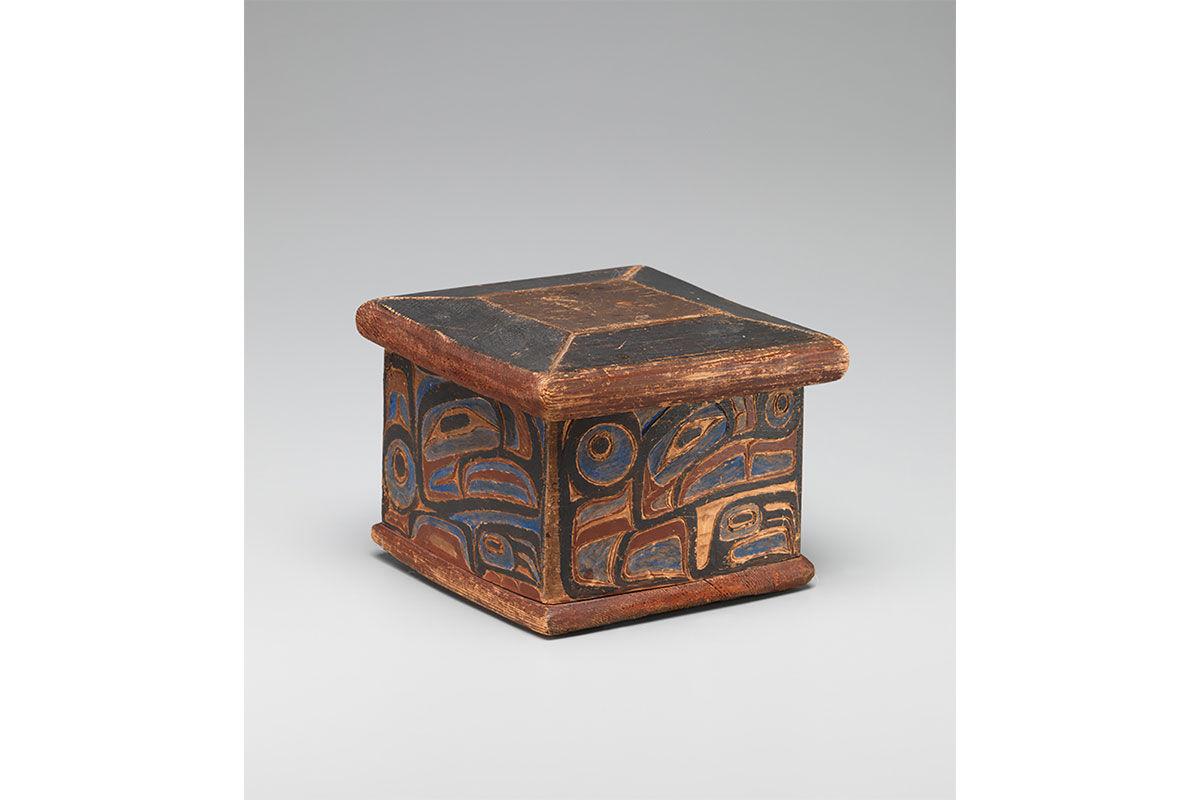Lidded Box
Heiltsuk
Northern British Columbia
late 19th century
cedar wood, paint
height: 5"
width: 5 ¾"
length: 5 ¾"
Inventory # N3944
Sold
RELATED EXAMPLES
Royal British Columbia Museum, Victoria, Cat. No. CPN 1856) – See: Black, Martha. Black, Bella Bella: A Season of Heiltsuk Art. Seattle: University of Washington Press, 1997, pg. 112, Fig. 26
Ethnological Museum, Berlin, Cat. No. MfB IVA 2475-2477 – See: Bolz, Peter and Sanner, Hans-Ulrich. Native American Art: The Collections of the Ethnological Museum Berlin. Berlin: G-Und-H-Verlag, 1999, pg. 172, Fig. 154 and Cat. No. IV A 516, Ibid, pg. 172, Fig. 155
Seattle Art Museum, Cat. No. D. SAM 86.278 – See: Brown, Steven C. Native Visions: Evolution in Northwest Coast Art from the Eighteenth Through the Twentieth Century. Seattle: University of Washington Press, 1998, pg. 105, pl. 5.4a,b.
National Museum of the American Indian, Cat. No. 15.8974 – See: McClennan Bill and Duffek, Karen. The Transforming Image. Seattle: University of Washington Press, 2000, pg. 232, Fig 7.18 for a box showing a stylistically similar shape to the lid
University of British Columbia MOA, Cat. No Nb3.1444 – See: Ibid, pg. 237, Fig. 7.24 a uniquely shaped chest attributed to Captain Carpenter.
Captain Carpenter was one of a small group of know carvers working in the late 19th century at Bella Bella. He is best know for a pair of elaborately carved settees, one from the Dryad Point light house where Carpenter was employed, now in the Royal BC Museum (RBCM 1856) and the other commissioned by J Adrian Jacobsen for the Berlin Museum (MfB IVA 2475-2477. Other large-scale work of the artist is a bent corner chest now in the Seattle Art Museum (SAM86.278) and another chest collected by Jacobsen now in the Berlin museum also possibly by the artist (IV A 516). Carpenter created a number of smaller works such as paddles, wooden spoons and simple boxes such as this example.
For a detailed discussion of the work of Captain Carpenter see attached essay by Bill McLennan and Karen Duffek

